Papers by Dorel Paraschiv
Autorii prezintă un mic lot de ștampile amforice ce provin din trei situri din regiunea Dobrogei ... more Autorii prezintă un mic lot de ștampile amforice ce provin din trei situri din regiunea Dobrogei de nord-est – Peceneaga, Zimbru II, Donca (Slava Rusă). Din punct de vedere al centrelor de producție, cele 17 ștampile se distribuie astfel: 10 documentează amfore de Thasos, două provin de la amfore produse la Heracleea Pontica, patru ștampile aparțin amforelor de Sinope și doar una celor ale Chersonesului Tauric. Chiar dacă o parte dintre ștampile au fost publicate anterior, am considerat utilă republicarea lor (cu unele corecturi și rectificări), acestora li se mai adaugă câteva exemplare inedite.
<strong>Keywords:</strong> roman, roman-byzantine, glass vessels, northen Dobroudja &... more <strong>Keywords:</strong> roman, roman-byzantine, glass vessels, northen Dobroudja <br> <br>Includes a summary in English.
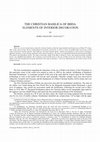
There are very few details known about the christian basilica within the large fortified Late Rom... more There are very few details known about the christian basilica within the large fortified Late Roman town of Ibida (6th century AD). In the course of time, the few archaeological excavations carried out, as well as a series of random finds, uncovered a varied range of decorative marble elements. These finds are structural elements (bases, columns and capitals) as well as pieces of liturgical apparatus (pilasters, small columns and finials of the chancel bannister). The pieces were manufactured from the best material available, Proconnesus and Aphrodisias marble. The range of decorative motifs of the finds is limited to crosses and vegetal decoration (acanthus leaves), very simplified and schematic. The occurrence of such marble pieces at the site of Ibida, proves the inclusion of this religious edifice in the wide beautification program attributed to the reign of Justinian I, which was implemented on the whole territory of the Scythia Province. <br> <br> <strong>Key...
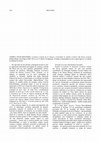
p. (cu 12 tabele, 30 diagrame, 20 figuri şi două planşe în text şi şapte figuri şi 112 planşe la ... more p. (cu 12 tabele, 30 diagrame, 20 figuri şi două planşe în text şi şapte figuri şi 112 planşe la sfârşitul acestuia) De mai bine de trei decenii, principala lucrare la care se raportează specialiştii preocupaţi de ceramica romană din Dacia este cea care-i aparţine "patriarhului" acestei categorii de artefacte, Gheorghe Popilian (Ceramica romană din Oltenia, Craiova 1976). Acesteia i se va adăuga, cu siguranţă, cea pe care-o prezentăm în rândurile ce urmează. Apărută sub egida Muzeului Naţional de Istorie a Transilvaniei şi a Centrului de studii romane din cadrul Universităţii "Babeş-Bolyai" Cluj-Napoca, în condiţii grafice de excepţie, cartea Vioricăi Rusu-Bolindeţ, concepută iniţial ca teză de doctorat, reprezintă al XXV-lea volum din cadrul consacratei serii Bibliotheca Musei Napocensis şi cuprinde Prolegomena (semnată de prof. univ. dr. Ioan Piso, coordonatorul ştiinţific al tezei) (p. 9-10), Cuvânt înainte (p. 11-14), I. Introducere (p. 15-67), II. Napoca romană (p. 68-100), III. Repertoriul formelor ceramice (p. 101-433), IV. Caracteristici mineralogice şi petrografice ale ceramicii romane din Napoca (autori Corina Ionescu şi Lucreţia Ghergari) (p. 434-462), V. Concluzii finale (p. 463-470) şi VI. Anexe (p. 471-681). Este cunoscut faptul că, în cadrul descoperirilor din orice sit arheologic, ceramica reprezintă, de departe, principala categorie de artefacte. În Cuvânt înainte, autoarea recunoaşte, cu modestie, că, în studiul acesteia, "este foarte dificil, dacă nu imposibil, de atins idealuladică de a cunoaşte, în egală măsură, fiecare categorie ceramică în parte, pentru a oferi o imagine de ansamblu, cât mai obiectivă, asupra acestui aspect al vieţii economice". Acesta este şi motivul pentru care Viorica Rusu-Bolindeţ s-a oprit, cu precădere, asupra veselei ceramice, opaiţele, amforele, teracotele şi materialele de construcţie fiind considerate, în stadiul actual al cercetării, ca domenii aparte ale ceramicii romane.
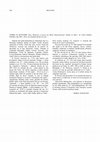
Ţibulcă şi Aurel Vâlcu) şi structurată pe mai multe părţi. În Tezaure monetare (p. 1-91) sunt inc... more Ţibulcă şi Aurel Vâlcu) şi structurată pe mai multe părţi. În Tezaure monetare (p. 1-91) sunt incluse şase descoperiri, datate în diverse perioade: Fedeşti-a doua jumătate a sec. IV-prima jumătate a sec. III sau prima jumătate a sec. II a. Chr. (34 piese histriene din bronz de tip "Apollon"), Schinetea-ultimele decade ale sec. XIV-1470 (12 monede din aur-patru perperi şi doi ducaţi din Chios, doi florini ungureşti şi patru imitaţii după ducaţi veneţieni, 59 din argint-58 de accii şi o imitaţie după astfel de monede şi una din bronz auritimitaţie după un ducat veneţian, la care se adaugă numeroase bijuterii şi accesorii vestimentare din argintengolpioane, diademe, inele, cercei, garnituri de centură, bumbi, aplici, toate fiind descoperite într-un vas-borcan), Vetrişoaia-a doua jumătate a sec. XV-sec. XVI (59 monede de argint emise de Imperiul romano-german, Polonia şi Ungaria), Bălţaţi-a doua jumătate a sec. XVînceputul sec. XVII (o monedă otomană din aur, 811 otomane şi occidentale din argint, precum şi numeroase bijuterii din argint-cercei, inele, bumbi, aplici) şi Vaslui
Información del artículo L'impact des facteurs naturels sur les sites archéologiques du Nord... more Información del artículo L'impact des facteurs naturels sur les sites archéologiques du Nord de la Dobroudja.
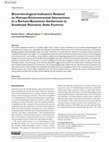
SAGE Open
The Roman–Byzantine fortress of (L)Ibida (Slava Rusă, Tulcea County, Romania) has preserved arche... more The Roman–Byzantine fortress of (L)Ibida (Slava Rusă, Tulcea County, Romania) has preserved archeozoological and archeobotanical remains (i.e., phytoliths) that allowed an evaluation of the human–environmental interactions in that period. Bringing together bioarcheological data, this study contributes to understand the subsistence economy during a period of sociopolitical changes in the region. The stratigraphical sequences and the preliminary observations made on the archeological materials (ceramics, metal artifacts, coins) indicate a relative chronology beginning with the second to third centuries AD and lasting until the sixth century AD. Phytolith analysis highlights the clear domination of the grasses (Poaceae) and indicates the presence of cereals within the fortress. In the surroundings of the fortress, it appears to have existed an open environment. Although modest, the percentage of the Spheroid phytoliths suggests the presence of woody dicots, indicating the fact that the...

Pontica, 2002
13 Amphora types produced in the Western provinces of the Empire during the Early Roman and at th... more 13 Amphora types produced in the Western provinces of the Empire during the Early Roman and at the beginning of the Roman-Byzantine period have circulated in the Lower Danube region, documented in the following archaeological sites: - Dressel 2 - 4 type - Novae and Aegyssus; - Haltern 70 type - Novae; - Dressel 38 type - Novae; - Dressel 25 type - Novae ; - Dressel 20 type - Novae; - Dressel 23 type - Halmyris, Babadag-Topraichioi, in the Ibidean territory, Nicopolis ad Istrum; - Dressel 7 - 11 type - Novae; - Dressel 14 type - Parthenopolis (Costinesti), in the Tomitan territory; - Dressel 38 type - Novae, Halmyris, Argamum; - Forlimpopoli type - Novae; - Dressel 6 type - Novae; - Comulodunum 189 type - Carsium; - An amphora for which no analogy was yet discovered, but for which the form and the material texture indicate the Western provenience (probably Betic), found at Beroe. From the presentation of the Western amphorae types discovered in the Lower Danube region, it's easily noticeable that Hispanic, followed by the Italic products predominate. These were mainly found in the fortified cities along the Danubian limes: Novae, Carsium, Beroe, Arrubium, Aegyssus, Halmyris; as one advances downstream, the percentage of the vessel discussed here diminishes, the resulting idea being that these products entered the Moesia Inferior trough the Eastern Adriatic harbours, these crossed Dalmatia and Moesia Superior. The absence of the Western products in the West-Pontic cities (except for the two Dressel 14 type amphorae from Parthenopolis) confirms that these ones were mainly influenced by the Orient even after the Roman conquest.

Pontica, 2000
The author discusses the origin, the spreading area and the chronology of several Roman-Byzantine... more The author discusses the origin, the spreading area and the chronology of several Roman-Byzantine conic amphorae, which, based on their capacity and slight form changes, he includes in four variants: A (plate 1 /1 - 3), B (plate 1 /4 - 6), C (plate 2/7 -10) and D (plate 2 / 11 - 13). The earliest production center for this type of amphorae was discovered at Seleucia; it dates from III rd - IV th centuries and only produced pieces included by the author in the C variant. The latest research revealed the existence of other two production centers situated in the southern Black Sea, one at Demirci (in the Sinopean territory), the second at Alapi (in the Heraclean territory), which begin their production at the end of the IV th century or at the beginning of the V th century. The amphora type discussed is documented in several circumpontic sites, in layers dated between the end of the IV th century and in the V th century for variants A, B, D and between the end of the IV th and the beginning of the VII th centuries for variant C.
Pontica, 2000
On presente deux ponds unciaux parallelepipediques en plomb; le premier, decore avec un caduce, q... more On presente deux ponds unciaux parallelepipediques en plomb; le premier, decore avec un caduce, qui represent un sextans - deux onces (la piece presente l'inscription [DIOYN]KIN), a ete decouvert a Piatra Frecătei-Beroe et le deuxieme, qui est la quatrieme partie d'une once - sicilicus a ete decouvert a Troesmis. Le pondus de Beroe est date au II e -III e s. ap. J.-C et celui de Troesmis au III e s. ap. J.-C. ou au debut de la periode romano-byzantine.
Arkeos Perspectivas Em Dialogo, 2006
Información del artículo L'impact des facteurs naturels sur les sites archéologiques du Nord... more Información del artículo L'impact des facteurs naturels sur les sites archéologiques du Nord de la Dobroudja.
Niniejszy numer zawiera artykuły w wersji pierwotnej.
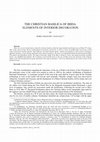
There are very few details known about the christian basilica within the large fortified Late Rom... more There are very few details known about the christian basilica within the large fortified Late Roman town of Ibida (6 th century AD). In the course of time, the few archaeological excavations carried out, as well as a series of random finds, uncovered a varied range of decorative marble elements. These finds are structural elements (bases, columns and capitals) as well as pieces of liturgical apparatus (pilasters, small columns and finials of the chancel bannister). The pieces were manufactured from the best material available, Proconnesus and Aphrodisias marble. The range of decorative motifs of the finds is limited to crosses and vegetal decoration (acanthus leaves), very simplified and schematic. The occurrence of such marble pieces at the site of Ibida, proves the inclusion of this religious edifice in the wide beautification program attributed to the reign of Justinian I, which was implemented on the whole territory of the Scythia Province.


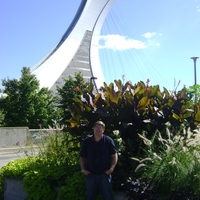

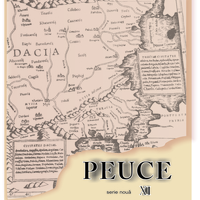
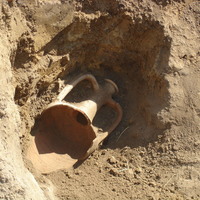

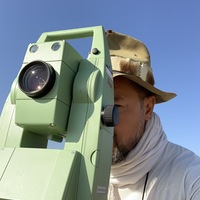
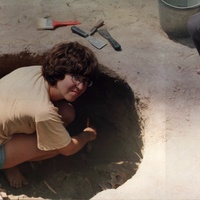
Uploads
Papers by Dorel Paraschiv